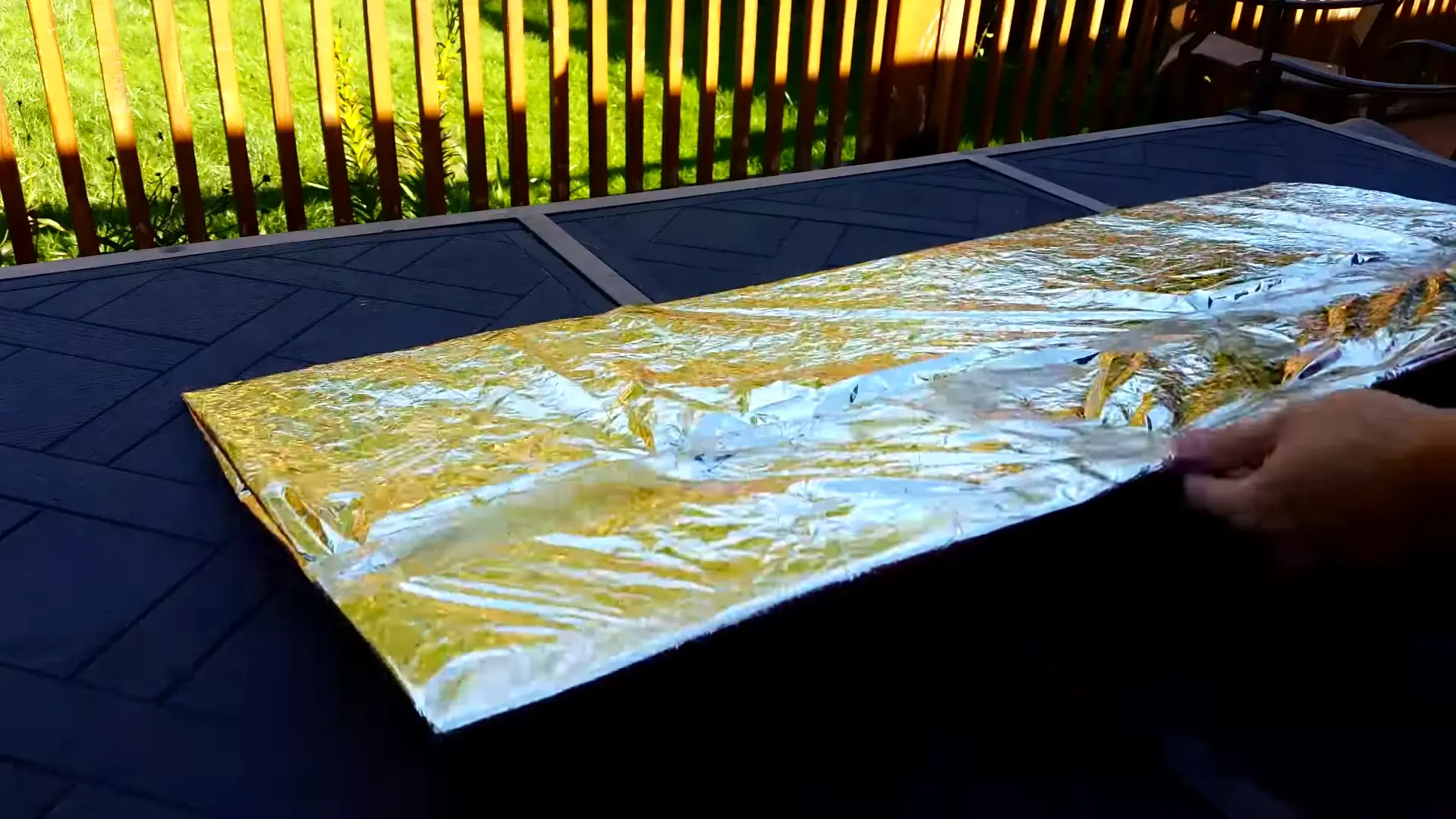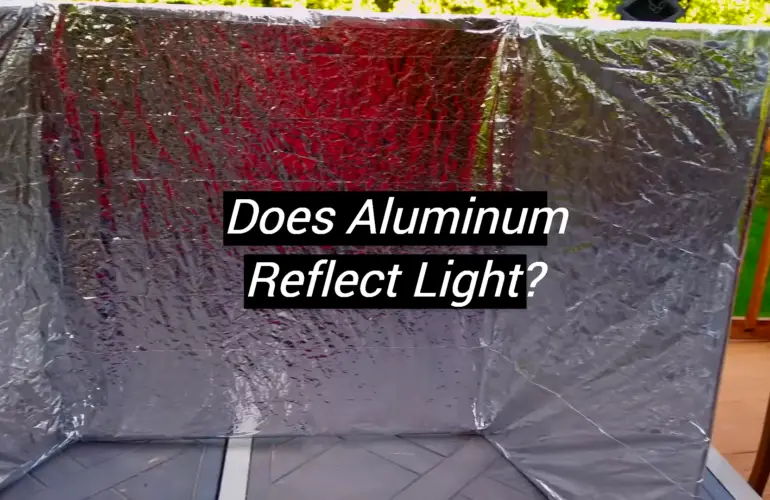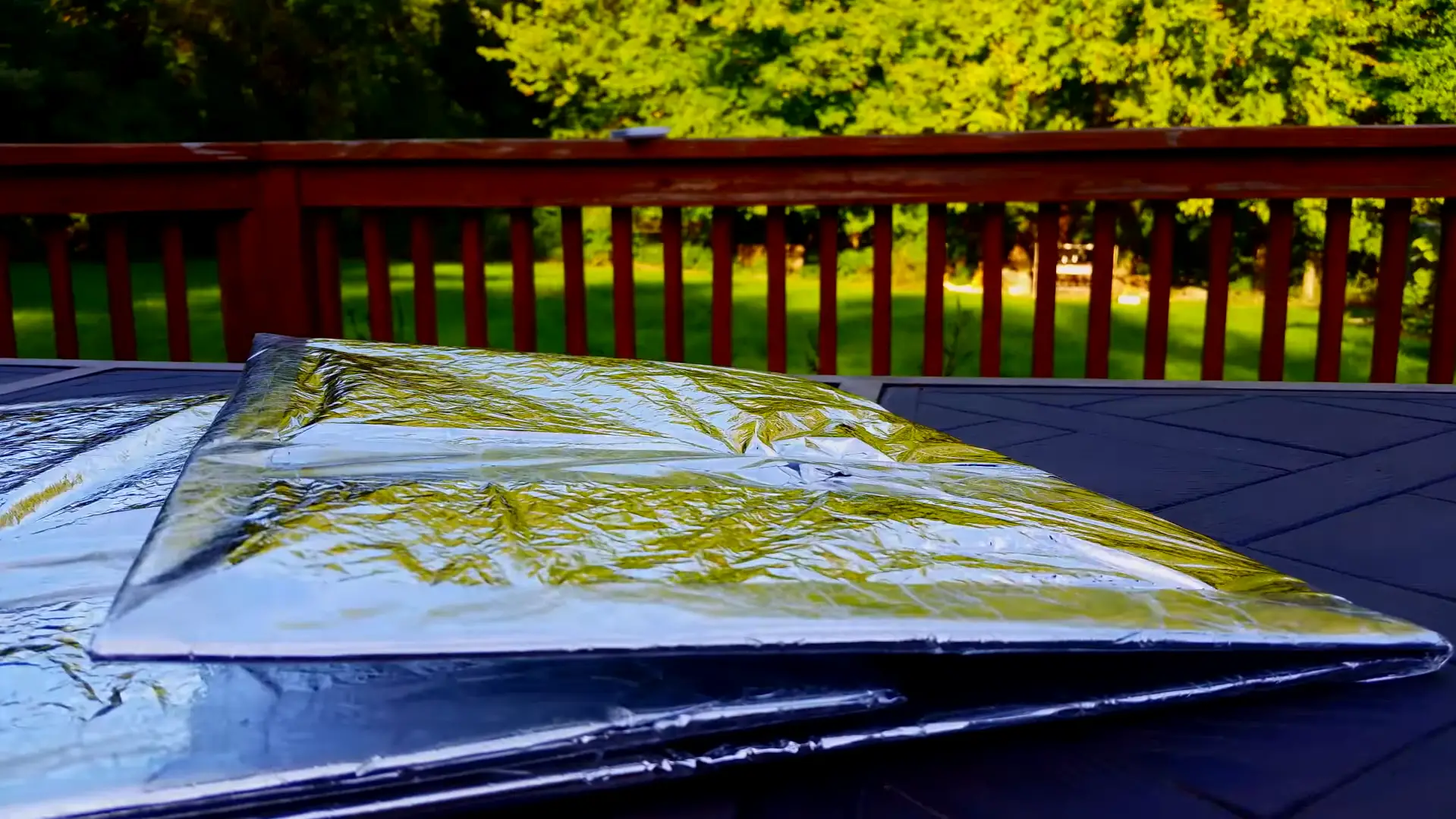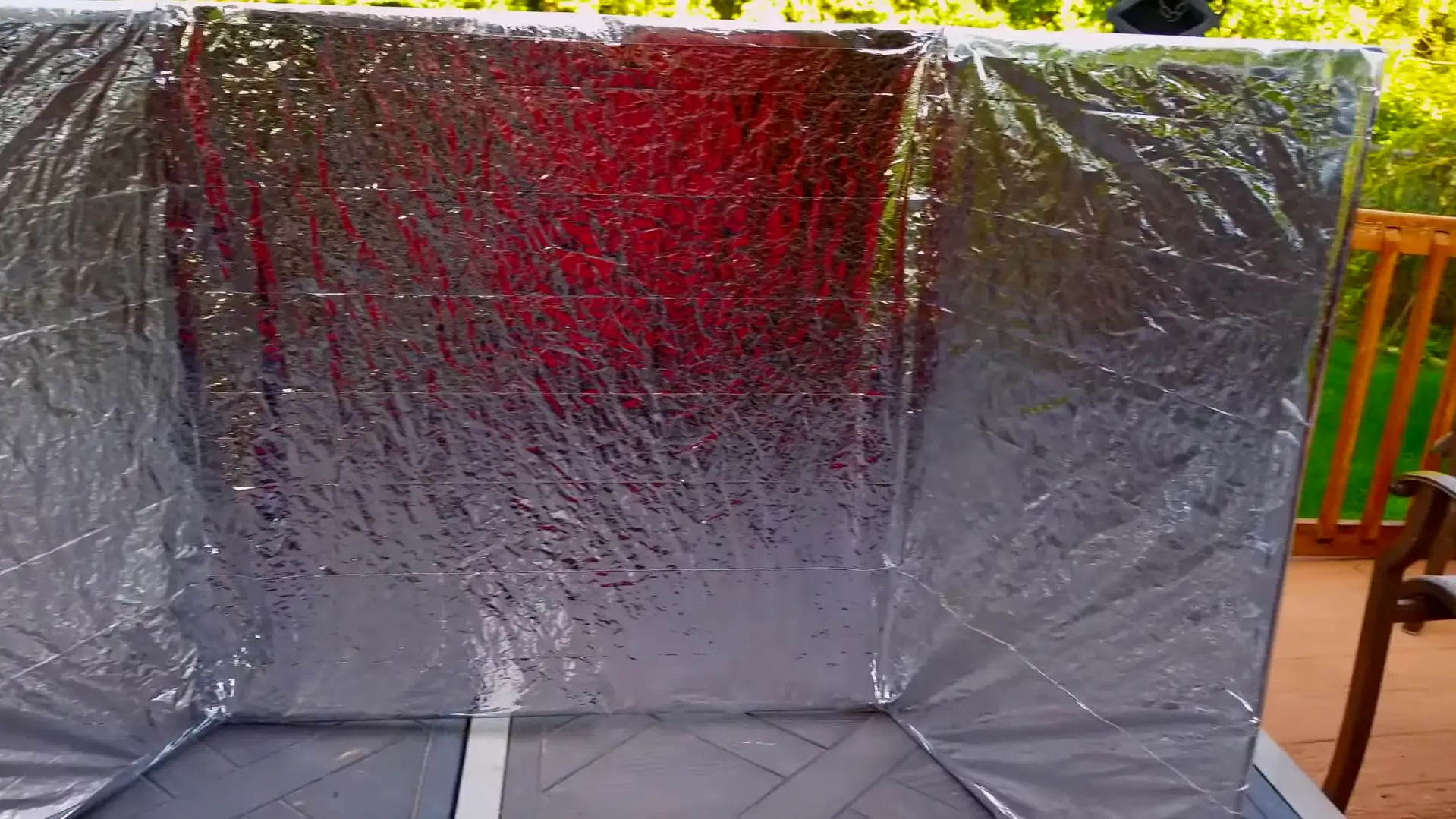Aluminum is probably one of the most widespread metals in our daily life. From kitchen utensils to aircraft and automobiles, this metal has numerous practical applications. One of the most intriguing properties of aluminum is its reflectivity. This unique feature of aluminum has fascinated materials scientists and researchers for decades. But does aluminum truly reflect light? In this blog post, we are going to explore this topic in detail by delving into the science behind reflective properties of aluminum and discussing some of its practical applications.
The Science of Aluminum’s Reflectivity
First of all, it is important to state that under reflectivity we mean the ability of a material to reflect light. It is determined by calculating the amount of reflected back light compared to how much light is received. This property is expressed in terms of reflectance, which is the percentage of light that is reflected back from the surface of the material. The higher the reflectivity of a material, the shinier it appears.
The unique characteristic of aluminum that makes it reflect light so effectively is that it has a very smooth surface at the microscopic level. Unlike other metals, aluminum does not have a surface layer of oxide that can tarnish or impede the reflection of light. Instead, the surface of the metal is covered with a thin layer of air, which helps to maintain the smoothness of the surface and ensures that light is reflected back with very little distortion. This is why aluminum is often used in mirrors, spacecraft, and other applications where reflectivity is critical.
Apart from being used in mirrors and spacecraft, the unique reflectivity of aluminum has other important applications as well. For example, aluminum foil is used in food packaging to keep food fresh by reflecting heat and light, and preventing the food from being exposed to the external environment. Aluminum is also used in solar panels, which absorb sunlight and convert it into electricity. The reflective nature of aluminum helps to boost the efficiency of solar panels by reflecting unused portions of the light spectrum back into the panel.
The ability of aluminum to reflect light is a remarkable property that has made this metal an invaluable resource in numerous industrial and consumer applications. The science of aluminum’s reflectivity is fascinating, and we hope to provide you with a better understanding of this unique characteristic. From the shiny surface of aluminum foil in your kitchen to the reflective surface of satellites in space, this metal truly shines in more ways than one.
Aluminum Reflectivity in Action
Aluminum reflectivity is a crucial aspect of the metal industry. This property of aluminum makes it a popular choice in many fields, including construction and aerospace. Because of the reflective surface of aluminum it is used in a huge range of applications, from reflective insulation panels to mirrors and even LED lights.
The reflectivity of aluminum is crucial for accurate solar-powered systems and equipment. This property of aluminum allows more light to be reflected, allowing panels to generate more energy. [1]
Another application of aluminum reflectivity is in the construction industry. It is used as a reflective insulation layer on the building’s roof to reflect solar radiation, thereby reducing the amount of heat absorbed by the building and helping to keep it cool. Reflective insulation can also help save energy by minimizing the need for air conditioning and reducing cooling costs.
Aluminum reflectivity is also crucial in the automotive industry. Car headlights, mirrors, and other reflective surfaces use aluminum to bounce light back, making it easier for drivers to see and navigate the roads. This property also helps reduce accidents and improve overall safety. Additionally, the lightness and strength of aluminum make it a popular choice for car bodies, reducing weight and providing fuel economy benefits.
The reflectivity of aluminum has made it a popular choice for energy-efficient properties, promoting fire-safety and reducing road accidents. As technology continues to advance, we expect to see more and more exciting new uses for aluminum’s reflective properties.
Benefits and Drawbacks of Aluminum Foil for Light Reflection
Aluminum foil is a common material used for light reflection, but what are the benefits and drawbacks of using it for this purpose? Now let’s explore the advantages and disadvantages of using aluminum foil for light reflection.
Benefits of using Aluminum Foil for Light Reflection
The primary benefit of using aluminum foil for light reflection is its high reflectivity. Aluminum reflects up to 98% of light, making it comparable to other highly reflective materials such as mirrors. Additionally, aluminum foil is inexpensive and readily available, making it an accessible option for those on a budget or in a hurry. [2]
Another benefit of using aluminum foil for light reflection is its flexibility. Aluminum foil can be easily folded and shaped to fit various surfaces, making it a versatile option for reflecting light in different applications. Lastly, aluminum foil is lightweight and easy to handle, making it an ideal material for DIY projects.
Drawbacks of using Aluminum Foil for Light Reflection
Despite its strong reflectivity, aluminum foil has some notable drawbacks when it comes to light reflection. Firstly, because aluminum foil is such a thin and lightweight material, it can be easily damaged. This means that it may not be a durable option for long-term use or exposure to harsh weather conditions.
Another drawback of using aluminum foil for light reflection is its tendency to wrinkle. Wrinkles in the foil surface can interfere with the reflectivity of the material, altering the quality of the reflected light. Finally, because aluminum foil is such a thin material, it may not be suitable for reflecting certain types of light, such as those with longer wavelengths.
Alternatives to Using Aluminum Foil for Light Reflection
If you are looking for alternatives to using aluminum foil for light reflection, there are many options available. For small-scale projects, reflective tape or reflective paint may be suitable options. For larger projects, highly reflective films or sheets may be more durable alternatives to aluminum foil. Additionally, mirrors or other metallic surfaces may provide a higher-quality reflection for longer-term use.
Best uses for Aluminum Foil for Light Reflection
So, when is it best to use aluminum foil for light reflection? Aluminum foil is a great fit for short-term, small-scale projects that require a quick and inexpensive solution. For example, if you need to brighten up a small space or reflect light into a dark corner, aluminum foil can be a useful tool. With its high reflectivity and flexibility, aluminum foil can also be a great option for DIY reflectors or photography lighting setups.
When considering whether to use aluminum foil for light reflection, it’s important to consider the size and scale of your project, as well as the durability and longevity required. Ultimately, if you need a quick and easy solution, aluminum foil can be a great tool for light reflection.
Future of Aluminum Reflectivity
As much as aluminum has been useful in the past, what about its future? What does the future hold for the reflectivity of aluminum? If you are interested in this topic, it will be useful to delve into it and provide insights into where aluminum reflectivity is headed.
The Advancements in Aluminum Production Technology
The future of aluminum reflectivity looks bright. One of the key drivers of this optimism is the advancement in production technology. Recently, there has been an increase in aluminum production methods that foster a more uniform distribution of the metal’s crystal structure. This, in turn, results in better surface reflectivity, making it more efficient and reliable for various applications.
The Impact of Nanotechnology on Aluminum Reflectivity
Nanotechnology is another key driver in the future of aluminum’s reflectivity. With the ability to control matter at the nanoscale level, researchers can manipulate aluminum’s surface, making it more uniform and reflective. Further, through nanotechnology, scientists can develop new and innovative aluminum-based materials with higher levels of reflectivity and different functions.

The Need for Greater Efficiency
Reflectivity is an essential attribute in various fields, especially in the energy sector, where it is crucial for solar panels, LED lighting, and other energy-efficient systems. As the world moves towards a more sustainable future, the need for greater efficiency is more important than ever. This demand will likely drive innovation and create new ways of producing materials with better reflectivity, such as aluminum.
The Future of Aluminum Reflectivity in Space
The demand for aluminum’s reflective properties is not limited to earth. With increased space exploration, there is a growing need for high-quality and durable reflective materials that can withstand the rigors of space. Aluminum’s reflectivity, low density, and durability make it an ideal candidate for mirrors, solar panels, and other equipment used in space.
Challenges Faced By Aluminum Reflectivity
Although the future of aluminum reflectivity is promising, there are still a few challenges that engineers and researchers must overcome. One of the main challenges is ensuring that the surface of the aluminum remains pristine and free of defects that may affect the metal’s reflective properties. Another challenge is developing efficient ways of producing aluminum with high-level reflectivity without significantly increasing production costs.
While it is impossible to predict the future with certainty, one thing is clear: the future of aluminum reflectivity is full of promise. Advancements in technology, nanotechnology, sustainable development, and space exploration will drive innovation and create new ways of creating materials with its higher reflectivity. While there are still some challenges to overcome, the outlook for aluminum reflectivity is overwhelmingly positive. Aluminum will undoubtedly continue to hold a pivotal role in the world’s technological advancement.
FAQ
Does aluminum absorb or reflect light?
In fact, aluminum reflects more than 90% of the visible light that hits it. This is due to its smooth and polished surface that allows light waves to bounce back without significant absorption. [2] However, this doesn’t mean that aluminum doesn’t absorb any light at all. In the ultraviolet (UV) and infrared (IR) ranges, aluminum has some absorption characteristics, but they are minimal compared to its high reflectivity.
Another critical factor that influences the reflection properties of aluminum is its surface finish. The smoother and more polished the surface is, the higher the reflectivity. This is why aluminum is often used in applications where maximum light reflectivity is necessary, such as in mirrors, solar panels, and light fixtures.
How much light does aluminum reflect?
Aluminum is known for its high reflectivity, which means it reflects a significant amount of light. In fact, aluminum has a reflectivity of about 90-95%, which is higher than other common metals like copper and steel. This property makes aluminum an ideal material for light fixtures, reflectors, and optical devices. Moreover, aluminum’s reflectivity remains constant over time, making it a reliable choice for long-term applications.
The high reflectivity of aluminum is due to its smooth and uniform surface, which enables light to reflect off of it with minimal absorption. However, the reflectivity of aluminum can be affected by various factors, such as the surface finish, thickness, and angle of incidence. For instance, polished aluminum reflects more light than a rough aluminum surface.
Why is aluminum so reflective?
Aluminum specifically has a unique combination of properties that makes it highly conductive for both electricity and light. It conducts electricity through the movement of electrons among the atoms in the metal, while light reflects off of the metal’s outer surface.
Aluminum also has a very smooth surface, making it excellent at reflecting light. When light waves come into contact with the surface of the metal, they scatter in all directions, making it appear white or gray to the naked eye. However, when the surface is polished, it becomes much smoother, rendering it a good reflector of light.
Did you know that aluminum is considered to be a “white” metal? This is because it reflects light without absorbing any of the color wavelengths. Therefore, when light passes through the metal, it emerges unchanged. This is very useful in applications such as light fixtures, where bright white light is often required.
Is aluminum more reflective than white?
In experiments comparing the reflectivity of aluminum and white surfaces, it’s been found that aluminum is indeed more reflective than white. This is because aluminum has a higher reflectivity index than white surfaces do. The reflectivity index measures the amount of light that’s reflected by a material versus the amount of light that’s absorbed by it. Aluminum has a reflectivity index of around 92%, which means that it reflects almost all of the light that hits it. White surfaces, on the other hand, have a reflectivity index of around 85-90%, so they do absorb some light.
Is aluminum always shiny?
Aluminum is not always shiny and has numerous factors affecting its appearance. The natural, environmental and finishing processes can change the appearance of aluminum significantly. However, regardless of how it looks, aluminum’s properties make it highly sought after and useful in various sectors of society. It’s a versatile metal that meets the needs of different industries and applications. Just remember, not all that glitters is gold, and shiny aluminum isn’t just aluminum.
Useful Video: DIY Light Reflector Under 5 Dollars | Easy and useful
Conclusions
In conclusion, aluminum is a highly useful metal with a unique set of properties, and its reflectivity is just one of them. Although it is not as reflective as copper or gold, it still has good reflectivity properties when compared to nonmetals. Reflectivity of aluminum is influenced by factors such as thickness, surface roughness and the angle of incidence of the incoming light rays. It is used in a variety of ways in our everyday life, ranging from headlamps and mirrors to reflective fabrics and solar panels. Consequently, understanding the science behind aluminum’s reflective properties is important as it is likely to remain a prominent material for use in various applications.
References:
- https://clintonaluminum.com/why-is-aluminum-such-a-good-energy-reflector/#:~:text=In%20addition%20to%20being%20highly,boost%20to%20a%20building’s%20efficiency.
- https://www.aluminum-foil.net/the-aluminum-foil-uses/










